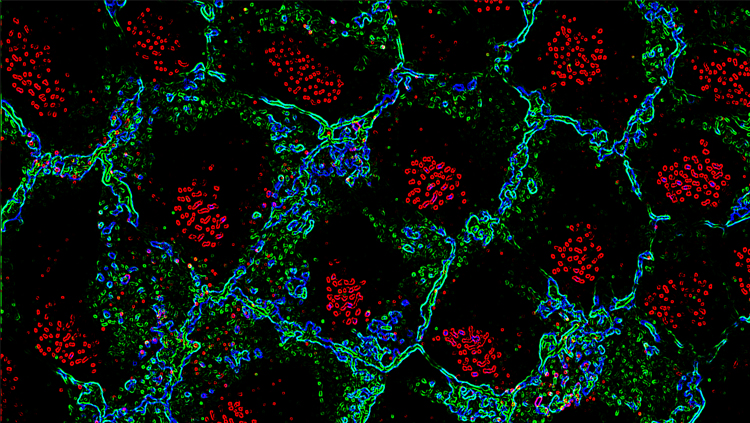
SfN Kicks Off 50th Anniversary Celebration with Series of Special Activities
In 2019, the Society for Neuroscience (SfN) celebrates its 50th anniversary, and a variety of special activities are being planned to recognize this milestone during the annual meeting and the months to come in 2020. The anniversary represents a golden opportunity to reflect on half a century of neuroscience and the efforts of the Society and its volunteers in supporting the field.
Then and Now
SfN has grown significantly since its founding in 1969 (see below). The Society now represents more than 37,000 neuroscientists from 80+ countries around the world. According to the History of SfN, the first annual meeting in 1971 gathered 1,395 attendees in Washington, D.C. Today, Neuroscience 2019 is expected to draw close to 30,000 attendees to discuss more than 14,000 abstracts, representing the largest gathering of neuroscientists at one of the world’s largest annual scientific meetings.
As its membership has grown, so have the Society’s efforts to pursue its mission. SfN has long advocated for neuroscience funding by engaging policymakers in discussions around new discoveries and emerging opportunities in neuroscience research and their implications for societal benefit and continued scientific progress. As many of these new advancements and emerging opportunities rely on the ethical use of animals in research, SfN is committed to informing policymakers and the public of the value and necessity of this work, while simultaneously pushing back against misconceptions about animal research.
An expansion of the Society’s goal to advance the field came in 1981 with the founding of The Journal of Neuroscience. JNeurosci reflected SfN’s membership in that it accepted manuscripts from a broad array of disciplines, helping to integrate the diverse field under the “neuroscience” umbrella. In 2014, SfN launched the open-access journal eNeuro as a continuation of SfN’s commitment to serving the field.
SfN’s mission pillar to support the neuroscience community has expanded into a number of programs over the Society’s history, serving different segments of the community. The Neuroscience Scholars Program (NSP) originated in 1981 as an annual meeting travel grant for trainees underrepresented in science. Funded through a grant from the National Institute of Neurological Disorders and Stroke (NINDS), NSP has since expanded into a two-year, award-winning training program. More broadly, the Trainee Professional Development Award (TPDA) has become a significant initiative supporting trainees in attending the annual meeting to present and network, with more than 200 young neuroscientists attending Neuroscience 2019 through the program. Additionally, the Increasing Women in Neuroscience initiative, originally funded under a grant from NSF, focuses on developing resources for individuals and institutions to recruit and retain women, minorities, and young investigators. SfN has grown its investment in scientific training and professional development programming, much of which can be found on Neuronline, the Society’s digital learning and discussion website, launched in 2015. Neuronline offers content members can access on demand from anywhere in the world, on any device.
Educating the public has evolved alongside the changing preferences for content. The Society first hired a science writer in 1989 to produce the first Brain Facts book, a scientifically accurate educational booklet focused on brain and nervous system anatomy for students, journalists, and the brain-curious public. The publication has since received regular updates in print, alongside newer digital and audio formats. Adapting to the online age, BrainFacts.org launched in 2012 to provide a constant stream of neuroscience content to the world.
A Golden Year of Celebrations
As SfN kicks off its 50th anniversary year at the 2019 annual meeting with a series of celebratory events and activities, the organization is inviting its members to both recognize all that they have achieved together over the last half century and look forward to the opportunities that lay ahead.
50th Anniversary Highlighted
- Content will be coordinated and created for sharing across the Society’s platforms including SfN.org; Neuronline, BrainFacts.org, SfN’s social media channels, and included in JNeurosci and eNeuro.
- A limited-run podcast series will launch in fall 2019 to tell some of the stories of SfN’s 50 years.
- Past, present, future of the field sessions will be hosted at Neuroscience 2019 and Neuroscience 2020 along with a Professional Development Workshop at Neuroscience 2019 focused on how the field has changed over the past 50 years.
- A second History of SfN essay describing the Society’s 1995-2019 milestones will be published. When combined with the first historical essay covering SfN’s 1969-1995 creation and growth, they chronicle the Society’s first 50 years.
- An interactive digital art experience that will highlight the beauty and wonders of the brain will take place at Neuroscience 2020.
- Ongoing special advocacy activities will engage more members with science policy and outreach to lawmakers in their communities.
- A Chapter public engagement interactive challenge invited chapters to create videos on a neuroscience concept and the winner will be announced at Neuroscience 2019.
As the members of SfN celebrate this milestone with these activities, events, and more, it is an opportunity to honor the achievements of their Society, reflect on how far the broad field has come, and to look ahead to the next 50 years of neuroscience progress with excitement.
Founding an Interdisciplinary Society
The Society for Neuroscience was formally created on July 11, 1969, at the National Academy of Sciences (NAS) building in Washington, D.C. The first acting Board of Directors of the Society consisted of 11 individuals, according to the SfN Articles of Incorporation:
- John M. Brookhart, University of Oregon Medical School
- Robert W. Doty, University of Rochester
- Ralph W. Gerard, University of California, Irvine
- Louise H. Marshall, National Academy of Science-National Research Council
- Neal E. Miller, Rockefeller University
- Edward R. Perl, University of Utah College of Medicine
- Alfred Pope, McLean Hospital
- Vernon Rowland, Case Western Reserve University School of Medicine
- James M. Sprague, University of Pennsylvania Medical School
- Robert L. Thompson, Hunter College
- John E. Wilson, University of North Carolina School of Medicine
The name “Society for Neuroscience” was consciously chosen in order to define “neuroscience” in the broadest possible terms as a unified field, encouraging interdisciplinary approaches to studying the brain — or as SfN Past President Vernon Mountcastle described in his opening remarks at the first SfN annual meeting in 1971, “what makes Man human.”
Marking a 50 Year Milestone
To celebrate the 50th anniversary of the Society’s founding and the 50th annual meeting in 2020, SfN’s Council formed a working group of volunteers devoted to reflecting on and reaffirming the mission of the Society. The working group consists of a diverse, international group of members that reflect the Society’s membership today:
- Magda Giordano, Universidad Nacional Autonoma de Mexico (co-chair)
- Larry Swanson, University of Southern California (co-chair)
- Bernice Grafstein, Weill Cornell Medicine
- Yevgenia Kozorovitskiy, Northwestern University
- Alexxai Kravitz, National Institute of Diabetes and Digestive and Kidney Diseases
- Brian MacVicar, University of British Columbia
- Gordon Shepherd, Yale University
The working group encouraged all SfN committees to develop special initiatives that collectively offer perspective on the past, present, and future of neuroscience and the Society. The initiatives include highlighting scientific advances, celebrating the increasingly global and demographically diverse nature of neuroscience, and enticing the next generation of researchers to the field.






















